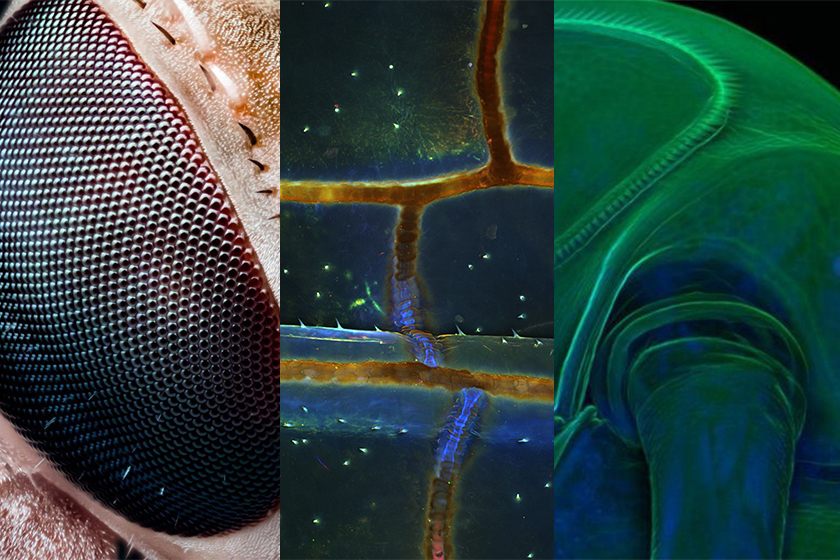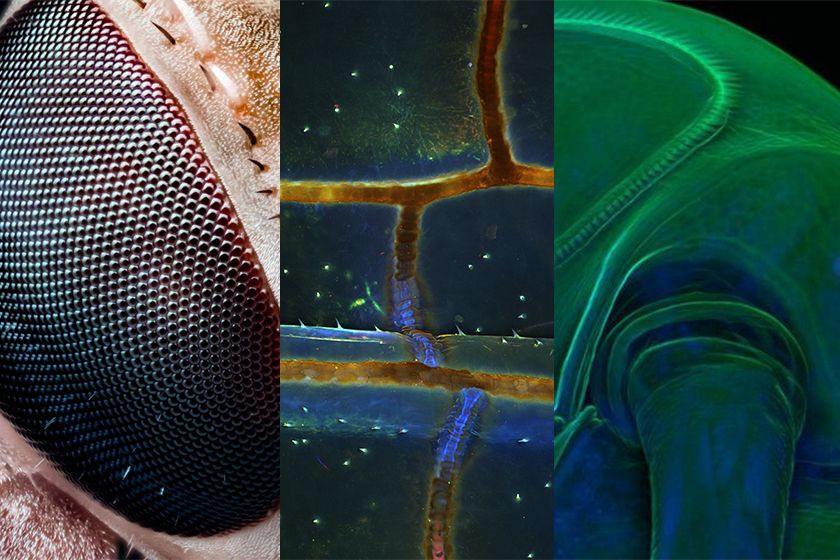While we’ve been working from home, it’s been nice to escape for a little bit by checking out some #sciart. In our Waltham office, April showers bring May flowers. And with the flowers come insects! Both are featured in this month's most popular images on the Olympus Life Science Instagram account.
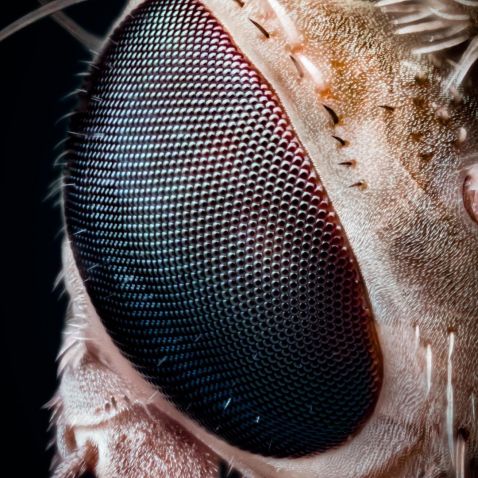
Does it feel like you're being watched? That's because you are! Here's a close-up look at a fly eye comprised of thousands of individual lenses. Compound eyes are made up thousands of ommatidia, individual visual receptors. These receptors work together to create a broad field of vision for the fly, and each has its own nerve fiber connecting to the optic nerve, which relays information to the fly's brain.
Image courtesy of Håkan Kvarnström.
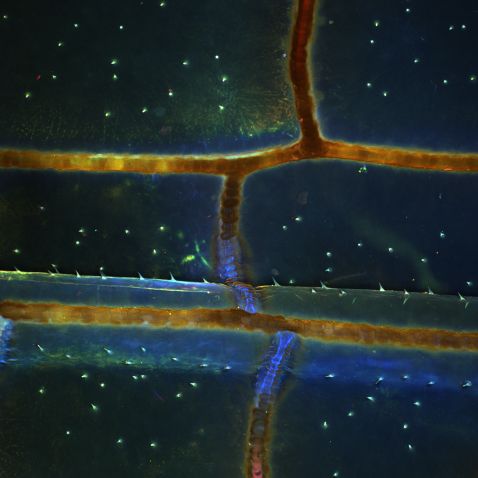
This microscope image of an insect's wing, receiving an honorable mention in our our Global Image of the Year competition, is titled “a road in the sky,” because the veins look like roads and the spines on the wing membrane are like stars. In addition to making a beautiful composition, the patterns resulting from the fusion and cross-connection of the wing veins can be used to identify the family or even genus in many orders of insects.
Image courtesy of Hamed Rajabi, 2019 Global Image of the Year Award Honorable Mention.

Pediastrum is a genus of green algae that inhabits freshwater environments. It has a fixed number of cells and reproduces asexually by producing autocolonies. Talk about like parent, like child—each cell’s offspring will have the same number and arrangement of cells as the parent colony.
Image courtesy of Håkan Kvarnström.

Another honorable mention from the Image of the Year competition is this striking scarlet blossom. Also known as thale cress or mouse-ear cress, this microscope capture shows inflorescence of arabidopsis thaliana with young, developing flower buds expressing as fluorescent reporters.
Image courtesy of Nat Prunet, 2019 Global Image of the Year Award Honorable Mention.
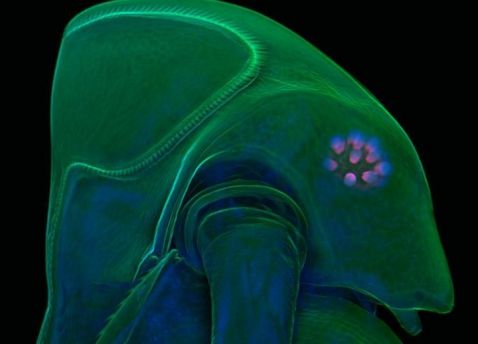
Any guesses what organism this is? Most of this species are found inhabiting freshwater, and in our Top 5 round up for March we learned that its lifespan is dependent on its living environment! If you guessed Daphnia, or a water flea, you’re correct!
Image courtesy of Jan Michels.
And the most popular video of the month:
Related Videos
And for a bonus this month we present an amazing video of larva hatching. "Watch a larva of a copepod, or a shrimp, hatch from its egg. The process took about 30 minutes and is kind of interesting to watch in time lapse. The little guy slides out into the world protected by an inner bubble-like sheath, breaks free, and swims away. As soon as the baby shrimp swims away a swarm of bacteria starts to gobble up the remnants of the egg."
Caption and video courtesty of @nomadicnostoc.
To see more images like these, be sure to follow us on Instagram at @olympuslifescience!
Interested in sharing your own images?
Visit our image submission site.
Related Content
Announcing the Winners of Our 2019 Global Image of the Year Award
